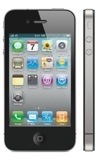The battle for your home TV is underway, and it will be interesting — and perhaps a bit scary — to see who’s left standing when the dust settles. I’ll bet my money on Apple as one of the winners — though it, like all other contenders, has its work cut out for it.
A new study by the Credit Suisse research firm shows that that an increasing number of young adults are now turning to Netflix to watch film and TV shows. Cable subscriptions have dropped the last two quarters — which once would have been unheard of.
The Zacks investment research firm (http://www.zacks.com) says that, although minor for now, this is probably the beginning of a larger trend.
“Although being downplayed by the current media giants, this was how Blockbuster downplayed it’s monopoly on rental videos,” the firm says. “Now Blockbuster is in near bankruptcy. The media types that have their head in the sand won’t survive. Already some are denying reality by saying this is all hype. Well, tell that to the music industry and how it changed with Apple’s iTunes and iPad. Tell that to Google that is investing huge sums. Comcast understands this and at the moment is running scared. Time Warner Cable has already come out with a lower price bundle. Basically, Netflix is providing streaming video from $9 to $60 whereas the cable prices run from around $70 to $115 monthly.”
If I could get our local stations, plus some other ones I like (Turner Movie Classics, AMC, etc.), I would gladly pay Netflix or some company substantially more than eight bucks a month, as I’m tired of being ripped off by Comcast. Heck, I’d love a service with a la carte pricing for TV shows. Maybe Apple will give us one when its ginormous data center in North Carolina fires up.
Apple hasn’t said what it plans to do with the server farm. However, analysts think it will play a key role in Apple’s move toward cloud computing and streaming media. The latest Apple TV is built for streaming. And the new MacBook Air, which Apple CEO Steve Jobs called the “future” of the entire MacBook line, is equipped with only flash memory and seems geared toward cloud-based initiatives.
If Apple — or someone — offered such a service, it would be a big hit. Instead of subscribing to a service from a cable, satellite or phone company that might offer you hundreds of channels you’ll never watch, you would be able to select what you want and watch it at your own schedule.
In fact, Nick Carr, author of the “ The Big Switch” a bestseller about the cloud, told “Cult of Mac” (http://www.cultofmac.com) Apple’s North Carolina facility is a “broadcasting system” not unlike NBC or CBS, but one that distributes software as well as media. The data center can be seen as essentially a broadcasting system that will enable Apple to make the shift from a downloading model of media distribution to a streaming model.
“It’s a proprietary broadcasting system (not altogether unlike traditional broadcasting systems), which means it’s a very different model of the cloud from the open model promoted by Google,” Carr tells “Cult of Mac.”
At 500,000 square feet, Apple’s $1 billion data center will be among the largest in the world. The unusual size of the data center suggests that Apple has ambitious plans for cloud computing, though Apple hasn’t said what it will be used for.
“Cult of Mac” notes that it’s assumed it will be used to stream music and movies from iTunes. Reports suggest the company is going to build a big office complex next door and is “going after the cable market.”
But it goes deeper than that, says Carr. The facility will help transition Apple from a download model of computing to a streaming model of computing.
I’m not sure what sort of negotiations Apple would need to make with the TV and movie studios for a la carte offerings, but I think it’s the way of the future. There has been a recent push to create laws that force cable providers to allow consumers to purchase individual cable TV channels à la carte, i.e. to allow them to pick and choose which channels they would like to have available in their homes.
Consumer advocacy groups have been asking Congress to look into why cable companies won’t let subscribers pick the channels they want in their subscription packages instead of being forced into accepting dozens of channels they may never watch while still paying for them. However, the cable and satellite industries argue that this would lead to more consolidation and “fewer voices.” They say (http://gigaom.com/video/is-a-la-carte-cable-a-suckers-bet/) a la carte would lead to:
° Fewer channels: the loss of carriage fees for programmers would translate into niche networks losing revenue and subscribers, while forcing surviving networks to charge individuals more to subscribe to their channels.
° Less ad revenue: with just the channels you want, there are fewer casual viewers aimlessly flipping through the dial. Fewer viewers results in fewer ad dollars. Networks that survived the shakeout could charge more, though.
° Economic impact: fewer networks and fewer TV ads means fewer jobs which would be felt throughout the economy.
However, I don’t buy these arguments. A Nielsen Media Research study three years ago (and I haven’t found an updated one) says that an average cable subscriber was paying for 85 channels when in reality that consumer only watched 16. Cable rates have more than doubled in the last 10 years with cable companies sometimes pointing to the increased number of channels as one reason for price hikes. That’s not a very good reason for me to pay more to the cable and or satellite company if I’m not watching most of the channels that are “pushed” on me.
I’ll continue this look at the battle for, and future of, TV tomorrow.
— Dennis Sellers



